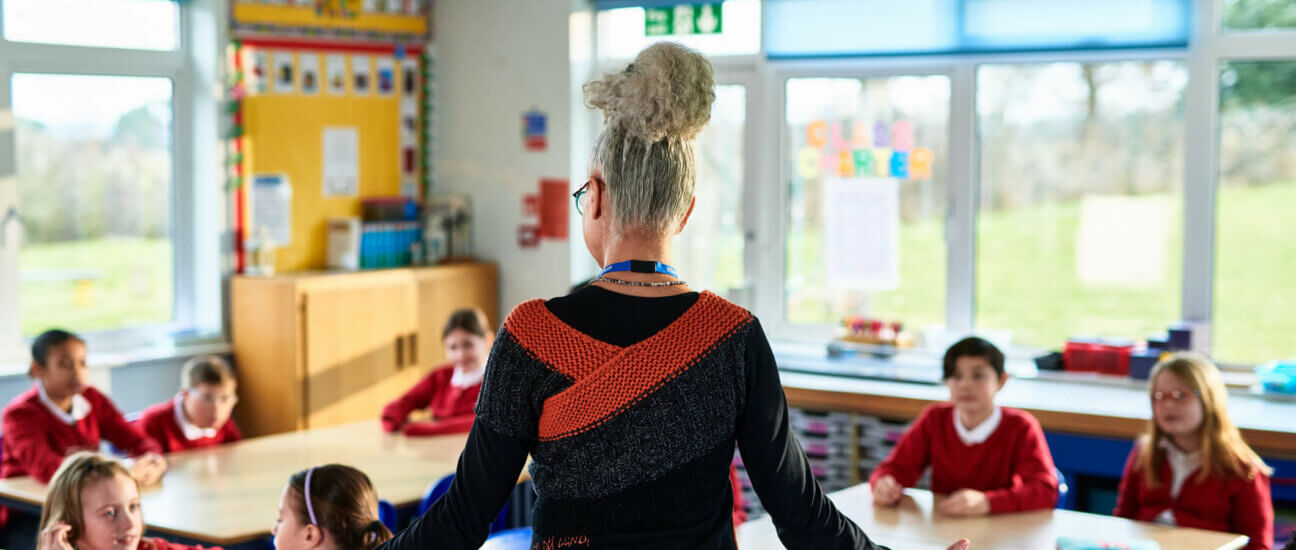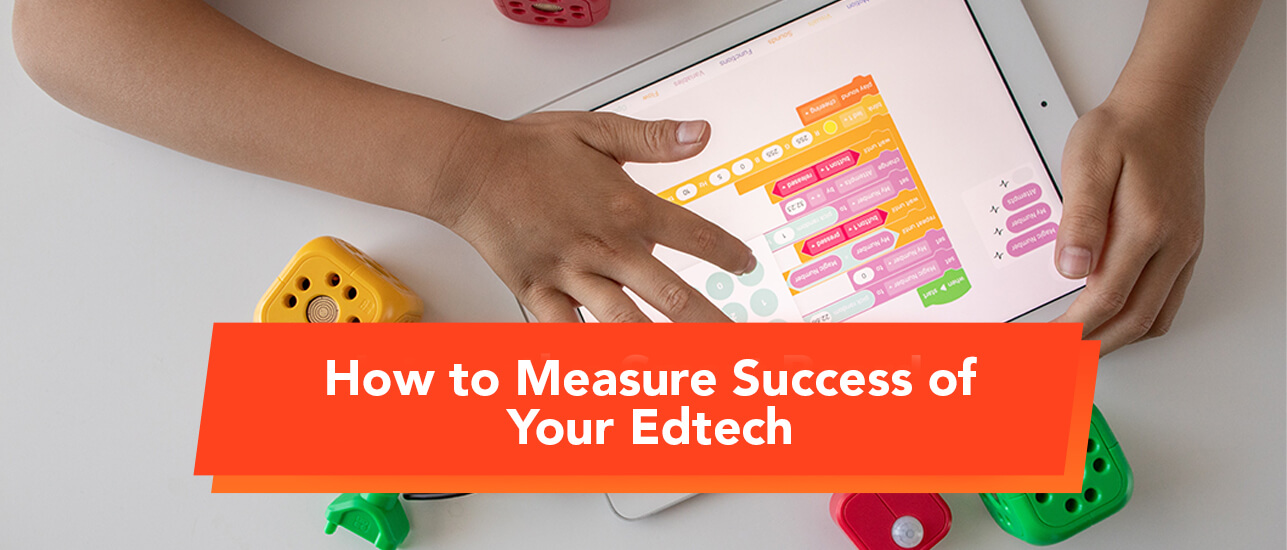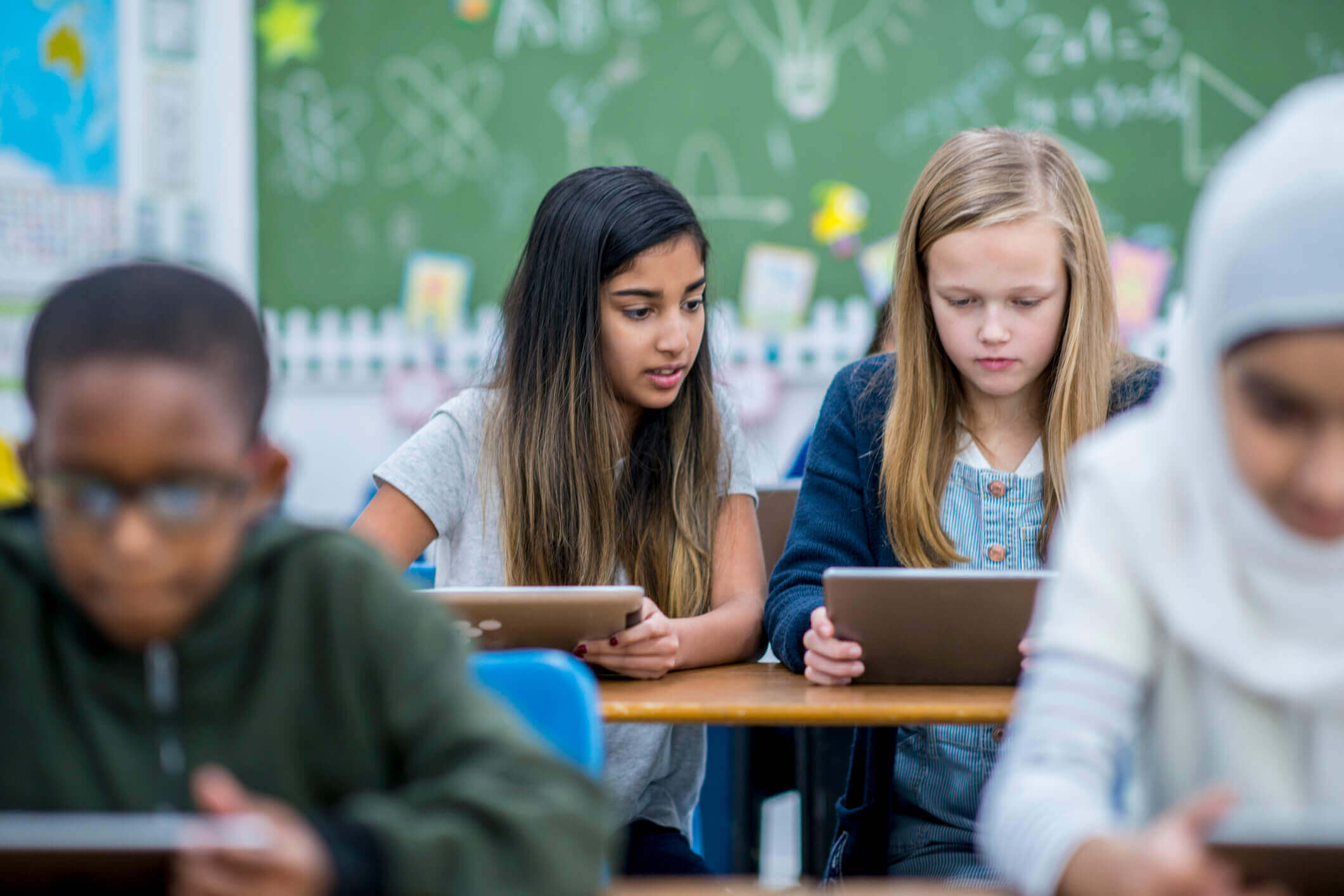The UKI State of Technology in Education Report shows an increasing trend of confidence in the value of edtech in the classroom. Educators believe tech should be a core part of learning, while edtech for engagement is on the rise. Teachers clearly recognise its importance, but how can edtech best be deployed to unlock maximum teaching and learning value?
Creating a more engaging classroom
At Tottingham Primary School, Executive Headteacher Stephen Holden sees edtech’s potential as “massive and essential.” He explains how it can strategically aid learning, rather than used as a gratuitous gimmick or simply to become a tech-savvy school. Supporting teachers rather than supplanting them, he’s found how edtech can creatively reconfigure the common classroom to actively engage and involve all students.
A process designed to “unchain teaching” from conventional, less effective practices — often primarily reliant on the teacher at the front — edtech’s used to optimise every student’s classroom experience. Tottingham’s staff realised some desks may be considered ‘cheap seats’ where students’ view of the central ActivPanel was obstructed at the back or in the corners. To overcome this, they use multiple screens around the room in a “daisy chain” which provides visual points for all students, as well as the option to safely distance them as became essential during the pandemic.
Expanding teaching activities and assessment methods
Embedding edtech in classroom layouts is a fundamental way of supporting students’ learning, creating a dynamic environment in which no-one’s disadvantaged. Device mirroring is a similarly engaging method teachers can use to project resources or share assessments throughout the classroom. Indeed, edtech offers a variety of ways for staff to enrich their styles and lesson delivery.
Beyond just facilitating students’ access to lesson resources, it’s an invaluable way of targeting different learning profiles. Creating PowerPoints, flipcharts and virtual models which enrich the quality of teaching, Glenn Carter, History Lead at Ingleby Mill Primary School, claims: “I don’t think I could do my job as effectively if I didn’t have technology.” Teachers can use touchscreen devices and apps to make the experience more seamless, enabling them to present diagrams or demonstrations which reinforce students’ understanding.
It’s also beneficial for both formative and summative assessment, so teachers can utilise more inspiring approaches. Using interactive quizzes and effectively analysing the results provides insights into areas where pupils have misconceived a topic, so they can tailor revision. IT Director Carl Hansen asserts edtech helps teachers manage workload: “It has a very positive impact upon the amount of work they do and the balance of their lives and the workplace.” Indeed, in addition to student benefits, edtech saves time in marking assessments and generally improves teachers’ productivity.
Making edtech a strategic priority, embedded into the classroom setup and a core component in lesson delivery, greatly benefits both staff and students. The most effective classroom edtech requires considered implementation as an enhancing tool rather than a perfunctory add-on.
This understanding lies at the heart of Promethean’s edtech tools and software. Our award-winning front-of-class displays are built to deliver real educational value, transforming teaching with an immersive, interactive experience. Request a free ActivPanel demo to discover all the benefits for supporting student engagement and attainment in your school.




